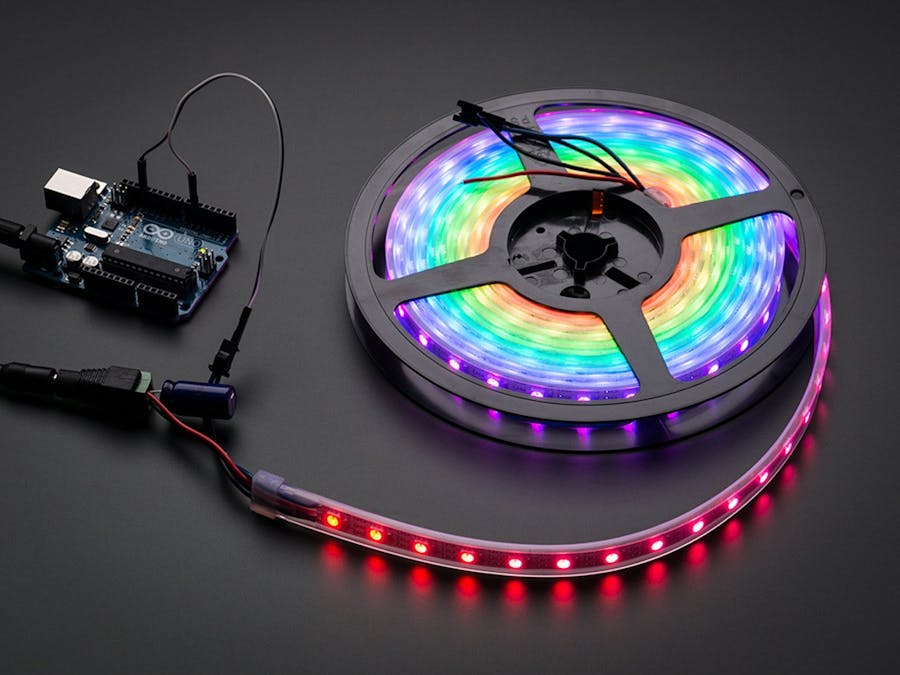In this tutorial, we will learn how to control individually addressable RGB LEDs or a WS2812B LED strip using Arduino.
For this tutorial, we'll assume that you're working with LED strips – the simplest way to light up your bike, bar, CPU tower, and so forth.
You can cut the strips to any length you like; to do so, make sure you cut across the center of the oblong copper pads. That leaves you with solderable pads on each end, which will allow you to chain them together after the fact.
Solder some male-male headers to the end, with the little arrows on the LED strip pointing away. The arrows should point away from your headers. Put your headers behind the arrows. (It helps to chant this in your head, if you're doing lots of them...)
Note: Depending on where you buy your "NeoPixels", you may end up with something that has the pins in a different arrangement. Pay attention to the labels, as well as the schematic :)
THE CODEGo download Adafruit's NeoPixel library to get started. You can just download the.zip file with the library, unzip it on your computer, and drag the contents into your Arduino libraries folder. (The "libraries" folder is usually created in the same "Arduino" folder where you save your sketches. If you don't have one yet, go ahead and create it.) Also, restart the Arduino IDE if you already had it open.
Once it's up again, you'll have some new example sketches. Let's take a look!
File > Examples > Adafruit NeoPixel > simple
This guy will light up your LEDs green, one at a time. How does it work? We're gonna use another for loop!
As we saw before, for loops are useful for nudging a number higher. We can use that to modify each LED in a sequence – or every other LED, or whatever you like.
- So, first, we tell the sketch to include Adafruit's library.
- Then, we define two variables: the data pin we're using (any PWM pin), and the number of pixels in the strip.
- In the next bit, we initialize the strip as a new object, pixels. (You can call it whatever you want, of course.)
- Then, we set a delay value, which will be used later to pause after lighting up each LED.
There's a little bit of board-specific code in the setup code, and then we tell the NeoPixel library to start communicating with this strip.
Loop time!
We've got another for loop, which is kicked off when the variable i is equal to 0.
Note that this is actually where we're defining the variable, as well – so it starts as 0. You can tell because of the int marker, and also because there's only a single = sign. (One = sets the first thing equivalent to the second, as in i = 0; two == checks to see whether the two sides are equivalent.)
So, this for loop says:
- If
iis0when you hit this block of code (and it is), then as long asiis less than the declared number of pixels, bump it up by 1... - then, set the color of the first pixel in the
pixelsstrand to green... - then, actually push that color to the pixel...
- then, wait 500ms (from the
delayvalsetting)... - and repeat for each successive pixel, until you max out the strand.
It's a simple but fun animation. :)
Hit upload and deploy this code to your strand.




_ztBMuBhMHo.jpg?auto=compress%2Cformat&w=48&h=48&fit=fill&bg=ffffff)




Comments